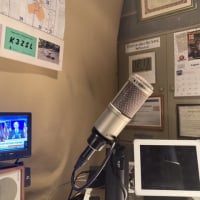SmartSDR v4.1.3 | SmartSDR v4.1.3 Release Notes
SmartSDR v3.10.15 | SmartSDR v3.10.15 Release Notes
The latest 4O3A Genius Product Software and Firmware
Need technical support from FlexRadio? It's as simple as Creating a HelpDesk ticket.
Will the flex 6300 transceiver do the job?

Comments
-
Paul,
for remote operations you do not need the Maestro. If you work on site, you will also have more fun using a real PC to control the Flex. The maestro only makes sense if you want to operate a flexy , as if it where a "normal" transceiver with knobs and buttons.
Harry
0 -
[{"insert":"Thanks Harry, I understand what you’re saying about the maestro. My bigger question centers on the performance of the 6300 which doesn’t seem to be manufactured any longer. Would the 6300 be a good radio for the type of operations I want to do? Or do I need to kick up to a 6400?\n"}]0
-
The 6300 has been out of production for 4+ years.
0 -
Hi Paul, the 6300 will certainly do the things that you listed above. Remote CW can be done directly using a Maestro, or using a simple interface that you would need to build and third party software.
Whether you need to jump up to the 6400 depends on your operating environment. The 6400 has 3rd order bandpass filtering and the 6600 and 6700 have the same plus 7th order filters on the contest bands.
These filters are particularly useful when operating multiple transmitters in close proximity, as you might during Field Day. They also help with overload from local commercial broadcast stations.
The 6300 and 6400 have one SCU, and can therefore only use one antenna at a time. The 6400 and 6700 have two SCUs, and can listen simultaneously on two different antennas. This is great for satellite work, SO2R contesting, and diversity reception.
I am sure that you will find the one that fits you best.
0 -
The 6600 and 6700 have two SCUs .
0 -
Paul, the 6300 has some nuanced differences from the 6400, but they are both functionally have the same capabilities for remote, cw, digital, etc. The same versions of SmartSDR run both radios the same.
There have been some maintenance issues with the 6300, fans and heat sinks, that have not occurred with the newer designs.
0 -
Paul,
Ever heard the Flex expression "The software is the radio"? Sure you have.
And this: "Regular software updates mean your radio continues to get better over time. Just download the latest software and you get a new radio!"
The Flex 6300 has been in the shack for 5+ years. What a great radio, as relevant today as when new. I did buy a Flex 6600 and enjoy it's features, but lets be clear- as KB4DU stated, they are functionally the same. I've used my 6300 remotely every winter for years, the only limitation is the poor uplink bandwidth at the remote site. Truth is, the 6300 does as well as the 6600 when the DSL uplink is limited to one "slice".
Maybe you found a great deal on the 6300- Buy it and upgrade the software.
The Flex 6400 is the best band for the buck in ham radio today. With the optional ATU (which my 6300 does not have) the 6400 today is less than I paid for my 6300.
Go for it Paul. "The software is the radio" and the Flex 6300 runs the latest SmartSDR software just fine.
Dave
1 -
You have all left great comments and I appreciate your input and advice. I like the low profile of the 6300 which appears to use less shelf space. The Flex (which ever one I end up with) will be sitting in a shed in some remote location and I have some concern (security/vandalism) with placing a high end transceiver away from my location, thinking a lower priced Flex6300 used unit will limit my exposure. Thanks again.....PaulP WA4AA0
-
Have had a 6300 since they were first introduced, no issues, no service returns, just works, use remotely with Maestro, iPhones, iPads, Use Maestro in the shack in Smart Control mode to control everything along with computer.
CW, SSB, AM, FT8, RTTY, driving Expert 2K. All good. Work everything I can hear, great in pileups. I prefer my favorite external keyer, so can't comment on cw generation by the rig. It's all on my QRZ page.
6 meters with built-in RX preamp is a performer.
Prefer SmartSDR for Mac and iOS but have had no issues with PC Flex SmartSDR, past or current versions. Have compared with 6400/6400 and see no disadvantage in 6300. FT8 on a Mac is plug and play.
No regrets. No need for 4 or 8 slices. Wholeheartedly recommend. With a good antenna, you can dial down AGC-T to zero and wonder where the noise went.
0 -
[{"insert":"Great, thanks so much for your comments.\nBest regards,\nPaulP. WA4AA \nNow I just have to find a 6300 at a good price\n"}]0
Leave a Comment
Categories
- All Categories
- 376 Community Topics
- 2.1K New Ideas
- 630 The Flea Market
- 8.2K Software
- 106 SmartSDR+
- 6.4K SmartSDR for Windows
- 183 SmartSDR for Maestro and M models
- 427 SmartSDR for Mac
- 271 SmartSDR for iOS
- 255 SmartSDR CAT
- 190 DAX
- 381 SmartSDR API
- 9.3K Radios and Accessories
- 36 Aurora
- 250 FLEX-8000 Signature Series
- 7.2K FLEX-6000 Signature Series
- 941 Maestro
- 55 FlexControl
- 865 FLEX Series (Legacy) Radios
- 917 Genius Products
- 460 Power Genius XL Amplifier
- 334 Tuner Genius XL
- 123 Antenna Genius
- 295 Shack Infrastructure
- 207 Networking
- 454 Remote Operation (SmartLink)
- 144 Contesting
- 784 Peripherals & Station Integration
- 139 Amateur Radio Interests
- 1K Third-Party Software



